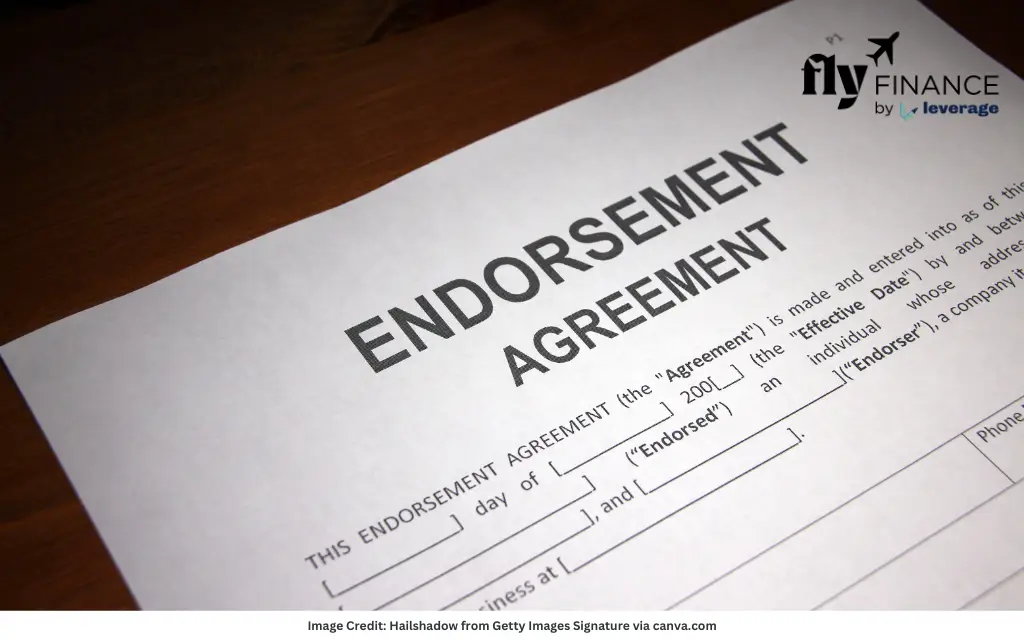Endorsement in banking is a term that often surfaces when dealing with negotiable instruments like cheques or promissory notes. Understanding its meaning and implications can simplify financial transactions and ensure smooth operations.
This blog explores the concept of endorsement in banking, its types, processes, and significance in everyday financial activities. Let’s get started!
This Blog Includes:
What is Endorsement in Banking?
Endorsement in banking refers to the act of signing or marking a negotiable instrument, typically a cheque, to transfer its ownership or rights to another party. This process is crucial for facilitating secure and legal transactions.
By endorsing a cheque, the endorser authorizes the transfer of funds to the specified recipient, ensuring the instrument’s negotiability.
- Definition: Endorsement involves a signature or instruction on a negotiable instrument to transfer its rights.
- Purpose: It enables the transfer of ownership, making the instrument payable to another party.
- Common Instruments: Cheques, bills of exchange, and promissory notes are frequently endorsed.
- Legal Aspect: Governed by the Negotiable Instruments Act, 1881, in India, ensuring standardized practices.
The concept of endorsement is rooted in trust and legality, allowing individuals and businesses to conduct transactions confidently. After endorsement one must understand how to deposit cheque in bank properly.
Also Read: What is OD in Bank?: How It Works, Features & More
Types of Endorsement in Banking
Endorsements come in various forms, each serving a specific purpose in financial transactions. Knowing the different types of endorsement in banking helps in choosing the appropriate endorsement for a given situation, ensuring the intended transfer of rights.
Blank Endorsement
A blank endorsement in banking occurs when the endorser simply signs the back of the cheque without specifying a recipient. This makes the cheque payable to the bearer, allowing anyone holding it to encash or deposit it.
- Features: No specific payee is named; only the endorser’s signature is required.
- Use Case: Useful for quick transfers but carries higher risk due to lack of restriction.
- Risk: If lost, the cheque can be encashed by anyone, necessitating caution.
Special Endorsement
A special endorsement, also known as a full endorsement in banking, specifies the person or entity to whom the cheque is payable. The endorser signs and writes the name of the recipient, restricting payment to that party.
- Features: Includes the endorser’s signature and the payee’s name.
- Use Case: Ideal for secure transfers to a specific individual or business.
- Benefit: Enhances security by limiting who can encash the cheque.
Restrictive Endorsement
A restrictive endorsement limits the use of the cheque, often specifying that it can only be deposited into a particular account or used for a specific purpose. This type of endorsement in banking adds an extra layer of control over the transaction.
- Features: Includes phrases like “For deposit only” alongside the endorser’s signature.
- Use Case: Common for depositing cheques directly into bank accounts.
- Advantage: Reduces the risk of misuse or theft.
Conditional Endorsement
A conditional endorsement imposes certain conditions that must be met for the cheque to be valid. For example, the payment may depend on the fulfillment of a specific event or requirement.
- Features: Includes a condition, such as “Payable upon delivery of goods.”
- Use Case: Used in business transactions to ensure obligations are met.
- Limitation: May complicate the transaction if conditions are not fulfilled.
The Process of Endorsement in Banking
The process of endorsing a cheque is straightforward but requires attention to detail to ensure legality and security. Proper endorsement ensures that the instrument is transferred correctly and funds reach the intended recipient. Here are the steps:
- Verify the Instrument: Ensure the cheque is valid, with correct details like date, amount, and payee name.
- Choose Endorsement Type: Decide whether a blank, special, restrictive, or conditional endorsement is appropriate.
- Sign the Back: Write the endorsement on the back of the cheque, including any necessary instructions or payee names.
- Deliver the Cheque: Hand over the endorsed cheque to the intended recipient or deposit it as required.
- Record the Transaction: Keep a record of the endorsement for financial tracking and reference.
This process, when followed correctly, ensures that endorsements are legally binding and secure, facilitating smooth financial operations.
Also Read: What is ECS in Banking?
Importance of Endorsement in Banking
Endorsements play a vital role in the banking system, enabling the seamless transfer of funds and supporting economic activities. Their significance extends to both individual and commercial transactions.
- Facilitates Negotiability: Allows cheques to be transferred easily, supporting cashless transactions.
- Enhances Security: Special and restrictive endorsements reduce the risk of fraud or unauthorized use.
- Supports Business Transactions: Conditional endorsements ensure trust in commercial dealings.
- Legal Framework: Adheres to regulations like the Negotiable Instruments Act, 1881, ensuring compliance.
In 2023, the Reserve Bank of India reported that over 1.2 billion cheques were processed annually in India, highlighting the widespread use of endorsements in banking transactions.
Common Mistakes to Avoid When Endorsing a Cheque
While endorsing a cheque is simple, errors can lead to complications, such as delayed payments or legal issues. Being aware of common pitfalls can help ensure a smooth process.
- Incorrect Signature: Ensure the signature matches the one on bank records to avoid rejection.
- Missing Payee Details: In special endorsements, always specify the recipient to prevent misuse.
- Ignoring Restrictions: For restrictive endorsements, clearly state limitations to enforce them.
- Endorsing Invalid Cheques: Verify the cheque’s validity, including date and amount, before endorsing.
By avoiding these mistakes, individuals can ensure that their endorsements are effective and secure, minimizing the risk of transaction failures.
Endorsement in banking is a fundamental process that enables the secure and legal transfer of negotiable instruments like cheques. By understanding the types—blank, special, restrictive, and conditional, and following the correct process, individuals and businesses can conduct transactions with confidence.
FAQs on Endorsement in Banking
Endorsement in banking is the act of signing or marking a negotiable instrument, like a cheque, to transfer its ownership or rights to another party, enabling secure fund transfers.
Endorsement in banking is the act of signing or marking a negotiable instrument, such as a cheque, to transfer its ownership or rights to another party. It authorizes the transfer of funds and ensures the instrument’s negotiability.
For example, if Priya receives a cheque from her employer, she signs the back and writes “Pay to Anil” to transfer the payment to Anil. This is a special endorsement, directing the funds to a specific recipient.
A full endorsement, also known as a special endorsement, is a type of endorsement in banking where the endorser signs the back of a cheque and specifies the name of the person or entity to whom the cheque is payable. This restricts payment to the named recipient, enhancing security.
The main types include blank endorsement (signature only), special endorsement (specifies a payee), restrictive endorsement (limits use, e.g., “For deposit only”), and conditional endorsement (payment depends on a condition).
A blank endorsement involves signing the cheque without naming a payee, making it payable to the bearer. It’s less safe due to the risk of misuse if the cheque is lost.
A special endorsement specifies the recipient by including their name and the endorser’s signature, ensuring the cheque is payable only to that person or entity for added security.
A restrictive endorsement limits the cheque’s use, such as directing it to be deposited into a specific account, reducing the risk of unauthorized encashment.
Yes, a conditional endorsement imposes conditions, like “Payable upon delivery of goods,” making it useful for ensuring obligations are met in business deals.
Verify the cheque’s details, choose the appropriate endorsement type, sign the back with any required instructions or payee names, and deliver it to the intended recipient.
Errors like incorrect signatures or missing payee details can lead to rejection or misuse. Always double-check details and ensure the signature matches bank records.
Endorsement facilitates negotiability, enhances transaction security, supports business dealings, and ensures compliance with legal standards like the Negotiable Instruments Act, 1881.
Yes, endorsements are governed by the Negotiable Instruments Act, 1881, which provides a standardized legal framework for negotiable instruments in India.
To learn more about bank accounts for students, the best education loans, forex, banking experience for global students, or international money transfers, reach out to our experts at 1800572126 to help ease your experience with studying abroad.
Follow Us on Social Media





























